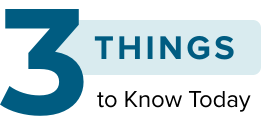

FDA Expands Home Testing Guidelines for COVID Exposures
The US Food and Drug Administration (FDA) provided new guidance for at-home COVID testing last week.
Three tests instead of two: After an exposure, the FDA now recommends people who have no symptoms take three tests instead of two.
48 hours between tests, no symptoms: If the first test is negative, the FDA recommends testing 48 hours later, then 48 hours after the second test.
Negative tests with symptoms: If the first test is negative but symptoms are present, the FDA recommends testing again after 48 hours. If it is still negative, a molecular-based PCR test is recommended.
The new guidance is based on findings that serial testing three times with at-home tests with 48-hour intervals detected more than 75% of infections compared with testing twice, which detected 60% of infection.

An Rx for Early Retirement
Leif Dahleen, MD, an anesthesiologist, retired in 2019 at age 43 after working for 13 years in a hospital. By the time he stopped working, he had saved nearly $4 million, which he estimates was enough to cover his family’s expenses for the next 40-50 years.
Here are a few tips on how he did it:
Pay medical debt early: Dahleen recognizes that he benefited from graduating 20 years ago, when medical debt was a fraction of what the average is today. Still, he recommends paying medical debt early on.
Modest lifestyle: The anesthesiologist also says having a modest lifestyle is important in order to save half of his income and pay off any debts. For example, he chose to buy used cars and live in small Midwestern cities where the cost of living is lower than it is large metropolitan areas.
Maxing out: Dahleen recommends maxing out 401(k) contributions and health savings accounts. He’s also a big fan of low-cost simple index funds and takes a long-term approach to investing.

How Doctors With Addiction Heal and Return to Practice
21.2 million Americans have substance use disorder, and 11% of that population seeks treatment, according to the Association of American Medical Colleges. Research suggests that the rate of substance use disorder in physicians mirrors the general population, meaning that an estimated 10% of physicians have substance use disorder and that many cases go untreated.
Physician health programs save lives: Federal State Physicians Health Programs focus on outreach, education, and health monitoring and has been shown to significantly help physicians with substance use disorders.
Sharing life-affirming stories: Revealing what got them into the program in the first place, even if anonymously, on the Federal State Physicians Health Programs website illustrates the different paths of addiction journeys and offers support to other physicians.
Studies show that 5 years after long term physician health programs, 81% of participants had zero positive drug screens and 95% had their license and were still working as a physician.
Kaitlin Edwards is a staff medical editor based in New York City. You can follow her on Twitter @kaitmedwards. For more news, follow Medscape on Facebook, Twitter, Instagram, and YouTube.

